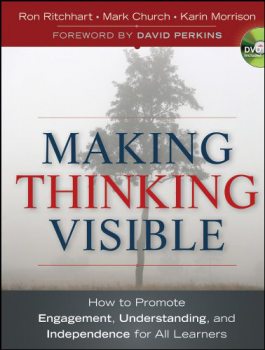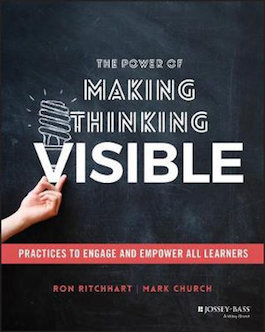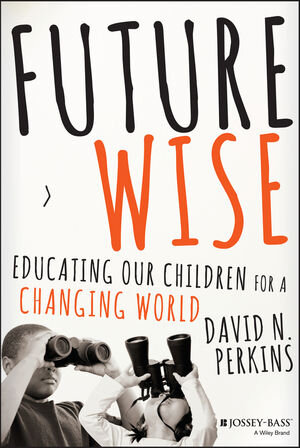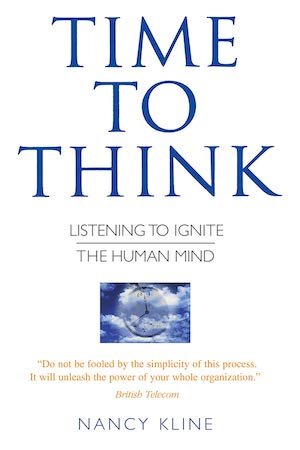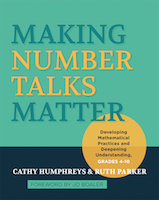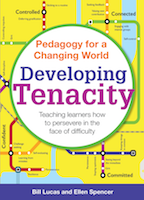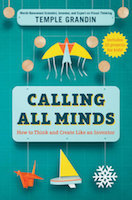If you are interested in building a classroom culture where thinking is noticed, named and celebrated, there are three books which make essential reading. They provide clear evidence for why teachers should focus their efforts on encouraging and normalising thinking and offer research-backed strategies to support this. The books are the result of ongoing research by Harvard’s Project Zero and their lead author Ron Ritchhart.
Ron has a long teaching history and understands the forces that shape classroom cultures exceptionally well. From his experience in the classroom, he noted that there are particular thinking moves which learners make that support them in developing a deep understanding. He also noted that teachers are able to deploy particular pedagogical moves to foster these thinking dispositions. Since joining Project Zero in 1994, Ron’s research with colleagues Mark Church and Karin Morrison have focused on providing teachers with a better understanding of how they might make thinking visible and build cultures of thinking in their classrooms. This work fits beautifully alongside other projects that sit under the Project Zero banner such as Teaching For Understanding and Agency By Design whose prime goals are well served by the enhancement of thinking dispositions. Indeed the prime belief of Project Zero is that “All Learning is a Consequence of Thinking”.
Making Thinking Visible: How to Promote Engagement, Understanding, and Independence for All Learners
by Ron Ritchhart, Mark Church, and Karin Morrison
This is the ideal starting point for a journey towards a culture of thinking. Readers are introduced to the importance of thinking and the role that it plays in learning. You are introduced to the notion that there are many different flavours of thinking and that we are more likely to effectively navigate the challenges that life presents if we are aware of the thinking required in a given situation. Thinking is unpacked and demystified. With a greater appreciation for thinking as a complex endeavour the value of noticing and naming it is discussed. If we are to teach our students to do something we need to be able to observe how it is occurring and how our teaching strategies are influencing it. While it might be nice to have each classroom fitted with an FMRI machine so we might peer into the functioning minds of our students this is perhaps not practical. Readers of Making Thinking Visible will discover more practical solutions. The book goes on to provide a set of routines that are shown to enhance the quality of thinking that our students engage in during their learning. The thinking routines are easy to utilise teaching tools that have a dramatic effect on your students' quality of thinking. If you find that your students often fail to provide detailed, thoughtful responses to questions, then you will love the effect that a well-chosen thinking routine can have.
Creating Cultures of Thinking: The 8 Forces We Must Master to Truly Transform Our Schools
by Ron Ritchhart
Once you have read Making Thinking Visible you will most likely become hooked on teaching students to think. You will have explored a variety of thinking routines and have delighted in the new depth of conversation that is becoming the norm in your classroom. As you go along you might notice that some of the points made in the last chapter of Making Thinking Visible are playing a more vital role in your thinking about thinking as you wonder "how do make thinking routine?”. This is where “Creating Cultures of Thinking” steps in as the perfect next read. By this point, you will be ready to move beyond using thinking routines and will want to have thinking become a natural part of your classroom culture. In this book, you are introduced to the eight cultural forces that shape our classrooms. If you want to adjust the culture of your classroom, you will have to confront these forces but how will you do that if you are not aware of what they are. Once you become a master at noticing the eight culture forces at work and make adjustments to how they are experienced in your classroom you will notice that you can indeed shape the culture of your classroom.
The Power of Making Thinking Visible: Using Routines to Engage and Empower Learners
by Ron Ritchhart and Mark Church
In this third book, Ron Ritchhart and Mark Church return to the theme of making thinking visible. The authors expand on why making thinking visible is such a powerful strategy and introduce a fresh set of thinking routines. This very recent addition is bound to provide a wealth of new ideas and energise your use of thinking routines. When you are ready for some new approaches to making thinking visible or want to target thinking moves in new ways, this is the book to read.
And, you might also find this helpful in building an appreciation of why any of this matters.
Future Wise: Educating our Children for a Changing World by David Perkins
How do you answer the 'uppity question’ from a student who wants to know why they need to learn what you are teaching? Do you reply that they need it to do well in the test or are you confident that it is learning they will need to do well in life? In this book Perkins examines what we teaching in schools and makes recommendations for a shift in focus. A key idea introduced early and unpacked throughout the book is the idea of ‘Life Worthy’; learning that is 'likely to matter in the lives learners are likely to live’. Future Wise is jargon free and a great book to share with colleagues, it will help you rethink what you spend time on in class and clarify how you see the role and purpose of education.
By Nigel Coutts

